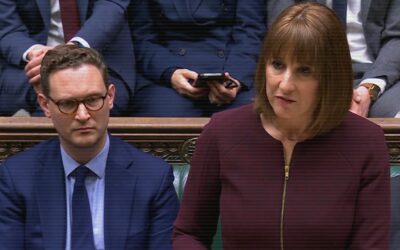The UK Liberal Democrats have re-issued a pledge to significantly increase the rate of the current UK’s Digital Services Tax (DST) from 2% to 6%, if they were to form part of the next UK Government at the upcoming General Election, intended to boost spending on mental health in schools.
Given TaxWatch’s work on the taxation of multinational tech companies the team takes another look at the DST and how it impacts companies in its scope. We are broadly supportive of the DST but conclude that there are other options available to the next Government if they wanted to reform how it works in order to generate additional revenues for the period it remains in force.
Background
The UK introduced its DST from April 2020 as a temporary tax on the revenues of multinationals providing specific ‘digital services’ (social media service, search engine or an online marketplace). It was designed to act as a stopgap whilst work progressed on the OECD’s Pillar 1 reforms to international arrangements to tax the profits of multinational corporations. Several delays to the timeframe (with the next deadline of 30 June 2024 for ratification of the Multilateral Convention looks inevitable to be missed) have meant that UK DST will remain in place for longer than expected.
How the DST operates
DST operates alongside corporation tax for companies within its scope. It applies where a corporate group has annual global revenues, relating to specific digital services, over £500m, and where the UK component of these revenues is above £25m . It’s currently charged at a flat 2% rate. TaxWatch research from 2021[1] found that the likely revenues from DST at 2% exceed what the UK will gain under Pillar 1 proposals when they are finally implemented. In its early years of operation the DST has raised more in revenue than HMRC forecast, and generates significant revenues for the UK Exchequer in its current form[2] yielding £670m in 2023/24[3], which is expected to increase to £1bn in 2028-29, should it still be in place[4].
One problem with the DST is that companies caught within its scope dominate their respective markets and have largely managed to pass on the economic effect of the tax through to users of their platforms, for example via higher selling fees for Amazon marketplace , and advertising fee income for Google . If anything this market dominance has strengthened further since 2020, meaning the amounts collected from the tax are increasingly being raised from platform users, rather than the intended target, with the multinational company effectively acting as tax collector on HMRC’s behalf. This shows that who is legally required to pay the tax and the party bearing the cost can be, and in this case definitely are, different.
Could the next Government hike DST to raise more revenue?
If the incoming Government wishes to raise further amounts from these digital services firms an increase to the DST headline rate of 2% is one way of trying to achieve this, with the benefit of being delivered quickly. However, this runs the risk of triggering tensions with the UK’s large trade partners, particularly the US, who are pivotal to agreeing the OECD reforms.
If the rate was materially increased this might also prompt a behavioural response where companies within the scope of the tax seek options to re-arrange their activities to attempt to avoid the increased charge, with the potential that expected additional revenues wouldn’t materialise from an increase in the DST due to such ‘behavioural effects’ (NAO reports that HMRC expected some of that in its forecast yield estimate but it wasn’t observed in the early periods after DST was implemented). As HMRC have not estimated a Tax Gap for DST, despite being encouraged to do so by the Public Accounts Committee, we don’t know whether behavioural change is a factor.
Other reform options open to the next Government to amend the scope of DST include lowering the thresholds of global revenues (currently £500m per annum) and/or the UK component (currently set at £25m pa). As legislated, both tests must be met for the DST to apply, meaning the number of companies captured by the tax is quite narrow.
Nearing the end of its lifespan, or spring chicken?
Whether the next Government prioritises changes to DST will probably depend on how long DST remains part of the UK’s tax regime. As noted above, DST was introduced as a temporary tax, intended to apply only for as long as it took for the implementation of the OECD Pillar 1 reforms. However the political pressure to keep DST may be significant, especially as it is delivering material revenues, which are forecast to grow further even if no changes are made to broaden its application or increase the amounts for the companies currently in scope.
It will be interesting to see whether next Government intends to honour the commitment made by their predecessor to remove DST when Pillar 1 eventually comes into force, and how the impact on the public finances would be managed. As we await further detail of the proposal in the party manifestos due next week the risk of relying on a temporary tax to contribute to funding public services on an ongoing basis appears clear.
[1] We concluded that the DST as set at 2% could deliver greater revenues than the UK would collect under Pillar 1 reforms in almost all eventualities. Whilst the assumptions used for this have moved on in the intervening time, it is still highly plausible that the Pillar 1 reforms will not deliver the materially fairer outcome for the UK tax regime than the current transfer pricing and international taxing rights based on company residence.
[2] Investigation into the Digital Services Tax – NAO report Figure 8 and 9
[3] https://assets.publishing.service.gov.uk/media/6645ad594f29e1d07fadc8e9/NS_Table.ods
[4] Economic and fiscal outlook – March 2024 – Office for Budget Responsibility (obr.uk) Table A.5
Photo by Solen Feyissa on Unsplash



